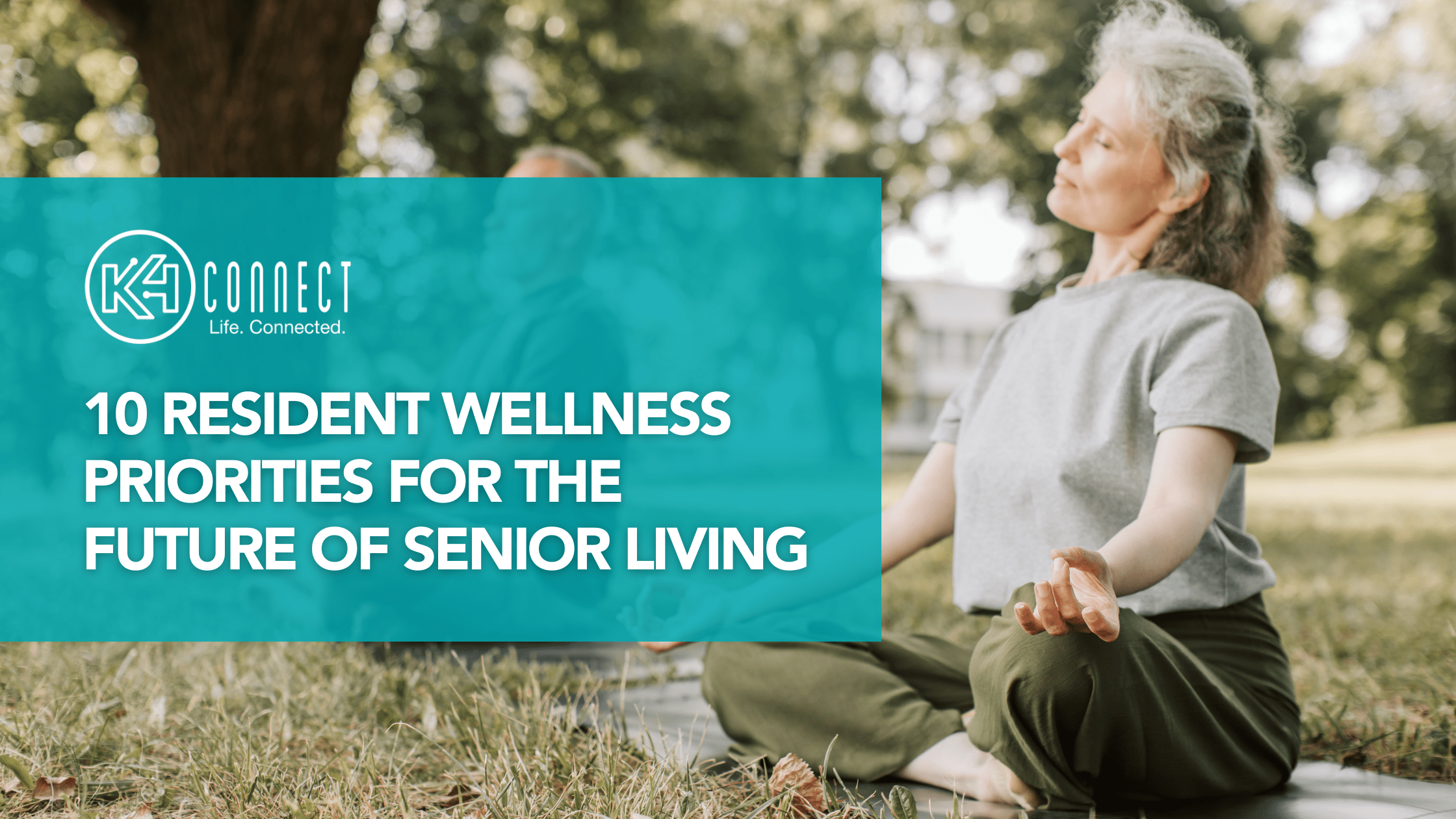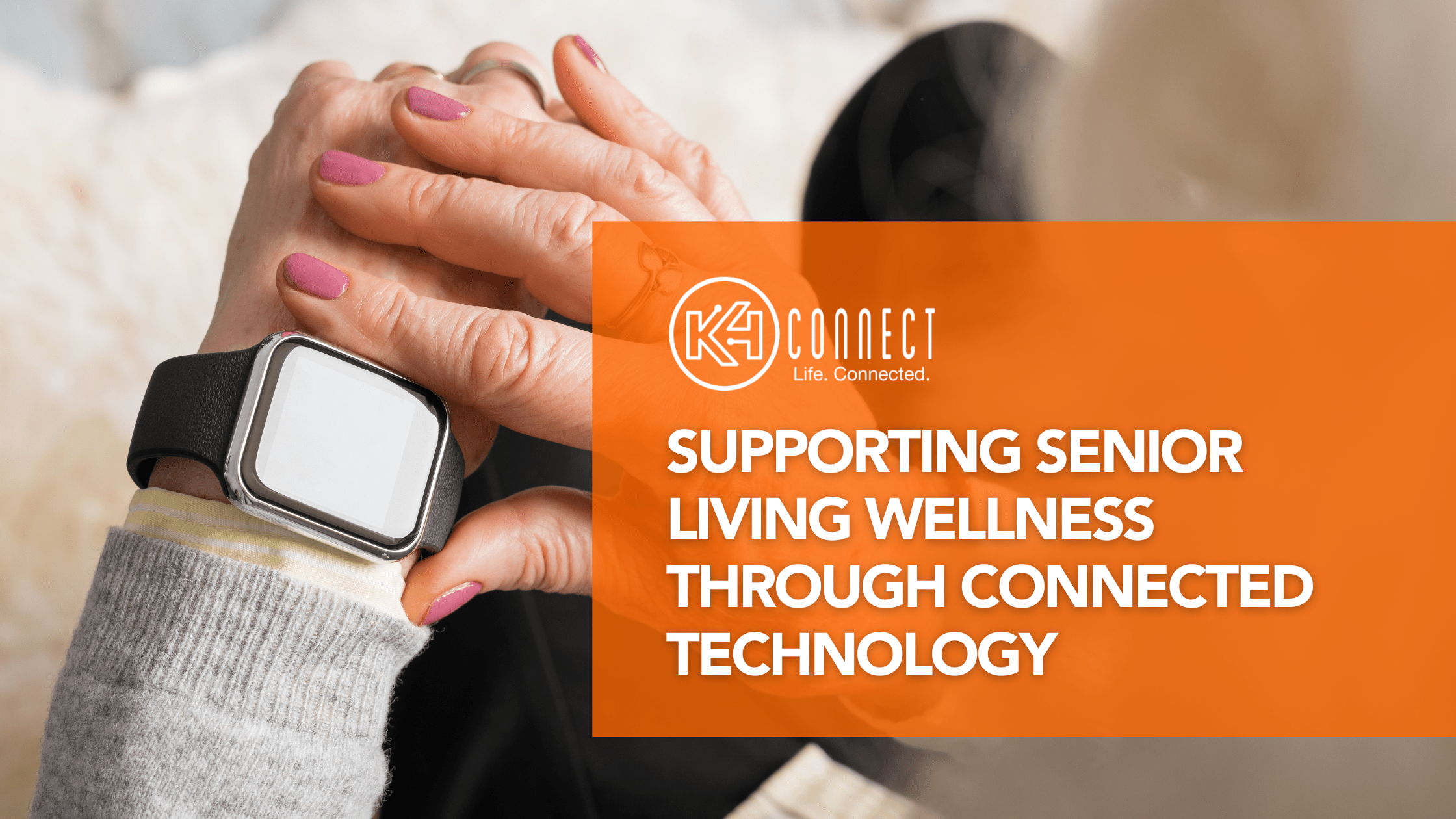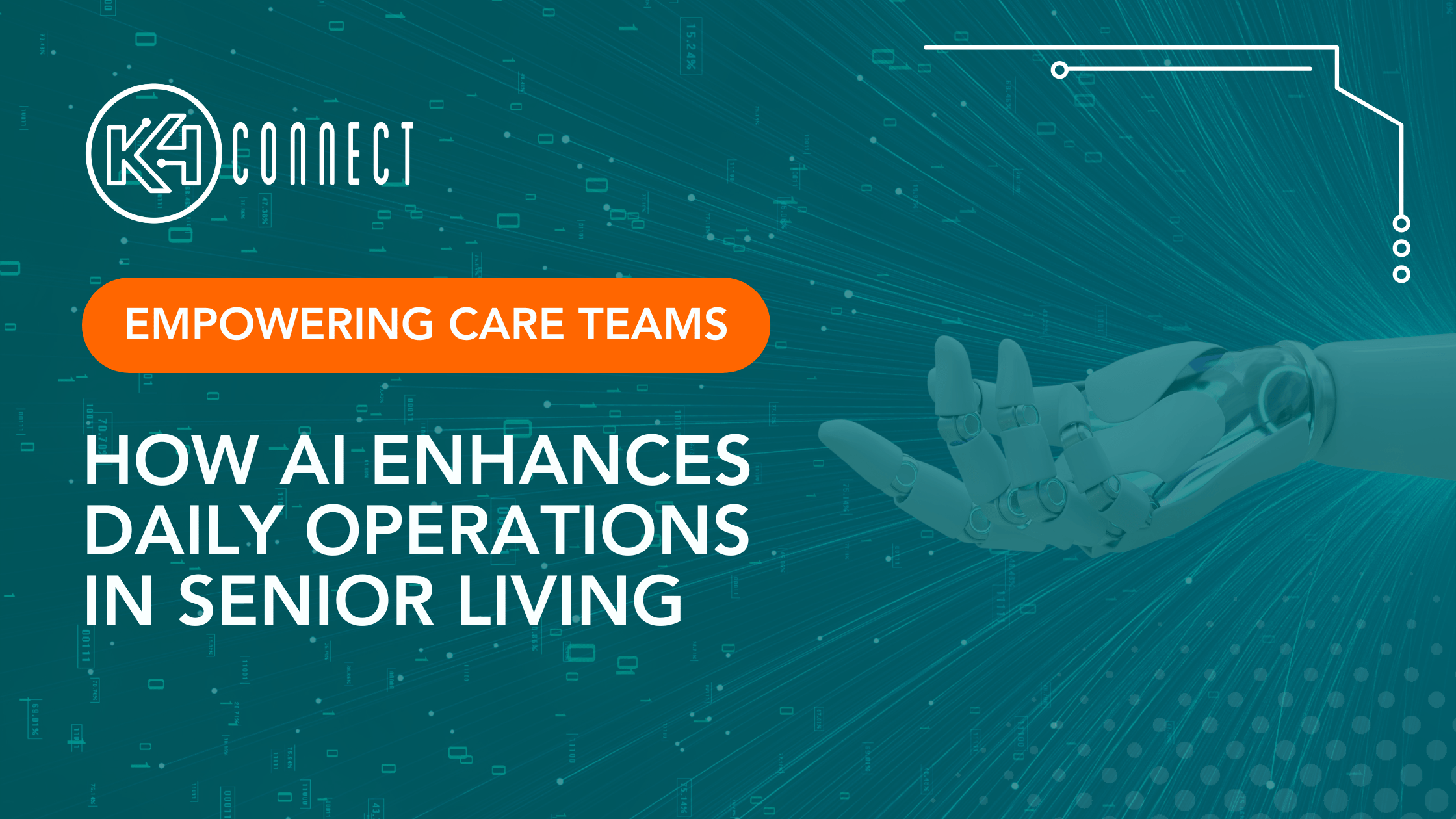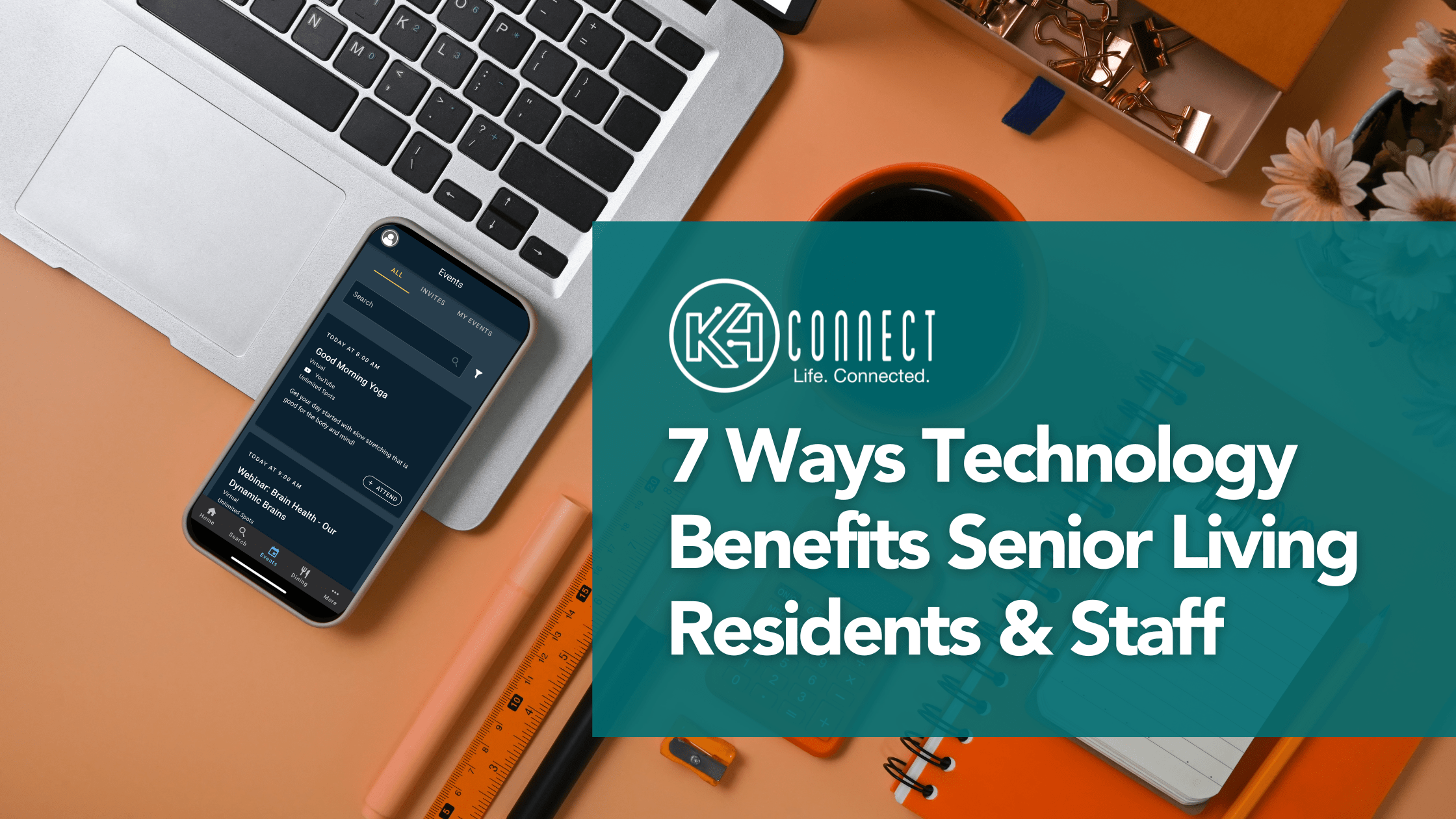We’ll break down five of the most common challenges IT leaders face in senior living today, along with practical strategies to help overcome them and turn those obstacles into real opportunities.
Continue reading6 Reasons Senior Living Is Investing In Data Analytics
Discover the top 6 reasons why senior living communities are investing in data analytics, transforming insight into action through smarter operations, better care, and deeper engagement.
Continue reading10 Resident Wellness Priorities For the Future of Senior Living
Senior living is evolving, and resident expectations are leading the way. Discover the top 10 wellness priorities that are shaping the future of aging.
Continue readingSupporting Senior Living Wellness Through Connected Technology
Senior living is evolving with resident wellness-focused innovations that enhance health, engagement, and well-being.
Continue readingEmpowering Care Teams: How AI Enhances Daily Operations in Senior Living
Discover how AI supports senior living teams by automating tasks, reducing burnout, and enabling more personalized, proactive care.
Continue reading7 Ways Technology Benefits Senior Living Residents and Staff
The future of senior living isn’t years away, it’s happening now. Technology is transforming senior living, making communities more connected, efficient, and engaging for both residents and staff.
Continue readingThe Challenges of Technology Interoperability in Senior Living Communities
For IT professionals in senior living communities, managing a growing portfolio of technologies is a daily challenge.
Continue readingCreating Community: Exploring the Vital Connections of Intergenerational Living
The Intergenerational Living Model: How It Works
In today’s society, two crucial issues are becoming intertwined: the rising costs of student housing and the increased social isolation of older adults in senior living communities. A creative solution that aims to tackle both these problems is intergenerational living, where students and seniors share living spaces. This approach not only provides affordable housing for students, but also fosters a sense of companionship for older adults, reducing feelings of loneliness and isolation.
The intergenerational living model offers two primary solutions. The more common one is Home Sharing, where students in need of affordable housing are paired with older adults who have extra space. In exchange for reduced rent, students can offer companionship or assistance with household chores. This allows older adults to combat loneliness and social isolation by gaining companionship, while students receive housing at a lower rate compared to dorms or high-rent apartments.
The second model allows students to live in senior care communities or retirement homes at a reduced cost in exchange for volunteering for a certain amount of hours. These students volunteer by engaging with the elder residents through activities such as conversations, and assistance with everyday tasks. This not only creates an affordable living option for students, but also fosters deep emotional connections between the younger and older generations.
Benefits to Society: Addressing Two Crises at Once
The benefits of intergenerational living extend beyond the financial relief for students. For older adults, social isolation is a growing concern, especially as their mobility decreases or after the loss of a spouse or close friend. Studies have shown that social isolation can lead to mental health decline, including depression, and even physical health risks like increased blood pressure or weakened immune responses. Living with younger students offers seniors regular social interactions, which can significantly boost their mental health and reduce feelings of loneliness.
On the other hand, student housing crises have reached critical levels in many cities, where the demand for affordable housing far exceeds the supply. Rising tuition costs and increased rent places an enormous financial burden on students. Through this program, students can alleviate these financial pressures, focus on education, and, in turn, provide meaningful companionship and assistance to their senior housemates. But beyond the affordable housing, students can gain valuable skills like empathy and a better understanding of older generations. Furthermore, intergenerational programs have positively affected students, including improved academic performance and reduced anxiety.
Successful Integrations of Intergenerational Living
Several successful intergenerational living initiatives worldwide demonstrate the effectiveness of integrating students and older adults under one roof. These case studies show how intergenerational living can be a mutually beneficial solution to housing shortage and social isolation.
- Canada HomeShare (Canada) The Canada HomeShare Program, which began as the Toronto HomeShare Pilot Project in 2018 has seen major success and expanded into multiple cities including Vancouver, Kingston, and Edmonton. It matches students needing affordable housing with seniors who have extra space, allowing students to pay reduced rent between $400-$600 monthly in exchange for five to seven hours of companionship or household help each week. Both groups have reported improved relationships and trust through the program which also helps to build stronger community ties.
- Humanistas Retirement Home (Netherlands) The Humanitas Retirement Home has allowed university students to live rent-free in exchange for 30 hours of volunteer work each month. The students provide companionship and organize activities for elderly residents. This model has proven mutually beneficial, reducing loneliness for seniors while offering students affordable housing. The integration of students has positively impacted the resident’s mental health, while students gained life skills.
- Judson Manors (United States) In Cleveland, Ohio, Judson Manors, a senior living community, allowed graduate students from the Cleveland Institute of Music to live alongside seniors at a reduced rate. In exchange, the students performed concerts and participated in events for the residents. This program has fostered deep connections between the younger and older residents, enhancing the quality of life for seniors, and giving students a unique living arrangement where they can focus on their studies while engaging with the community. Judson Manors has received national attention for its success in reducing isolation and improving well-being among older adults.
A Growing Trend
As the housing crisis worsens in many cities, intergenerational living is becoming a popular and effective solution. With programs like Canada HomeShare scaling up across the country, and universities launching more intergenerational housing projects, this model could become a significant part of the solution to both housing shortages and the social isolation of older adults.
By addressing the unique needs of both demographics, intergenerational living is providing a win-win solution for today’s housing crisis and social challenges. This model not only eases financial burdens on students but also strengthens community ties to create a more connected and supported society.
References:
- https://www.judsonsmartliving.org/about/judson-smart-living-programs/student-residents/
- https://bcmj.org/articles/intergenerational-housing-model-improving-older-adult-health
- https://universityaffairs.ca/news/news-article/with-rentals-scarce-a-program-that-houses-students-with-seniors-is-growing-fast/
- https://ssir.org/articles/entry/building_university_capacity_for_intergenerational_home_sharing#
- https://gslglobal.com/2024/03/15/intergenerational-living-growing-in-popularity-as-student-housing-crisis-continues/
Connected Medical Devices and Wearables Are Revolutionizing Senior Living

By Ria Madan
We have all seen in recent years how technological advancements have made our lives easier including healthcare, and especially for older adults. Connected medical devices and wearables have altered the way seniors live daily by promoting independence, enhancing wellness, as well as altering the way caregivers predict and react to critical issues. Offering new and improved devices and features will continue to enhance the way older adults stay connected and engaged in their own healthcare, and how those who care for them can make better informed decisions that positively affect longevity and quality of life.
When wearable technology was first introduced to consumers, it focused primarily on physical activity and tracking simple metrics like step count. Since then the wearable technology market has expanded exponentially and is expected to reach $70 billion by 2028. A significant part of the rising market is medical grade devices and wearables that focus on monitoring the safety and wellness of individuals. The most prevalent users of such devices are older adults who may have recently had surgery, are prone to falls, or those who have conditions that need to be continuously monitored such as diabetes, hypertension, dementia, and other cognitive issues.
The Benefits of Wearable Medical Devices for Senior Living
- Independent Lifestyle: One of the main benefits of wearable devices for older adults is the ability to promote a more independent lifestyle. Smart devices with features like fall detection give seniors more confidence and a sense of control over their life. If a senior wearing a medical device falls, the device can send an alert to emergency services, caregivers, friends and family. Knowing that help is immediately informed and readily available gives both the seniors and those who care for them peace of mind that they will be taken care of in case of emergencies or accidents.
- Real time data: Another key benefit of wearable devices is the ability to collect real-time data. These devices give users the ability to continuously track their metrics such as heart rate, blood pressure, blood sugar, and overall activity, allowing them and their doctors to monitor and address any imminent health concerns much earlier, and to create personalized health and wellness plans focusing on areas of improvements to avoid long term problems. Furthermore, tracking these metrics and more can potentially help detect other related health issues earlier allowing older adults and their caregivers to be proactive by focusing on reducing the risks and complications that may arise, rather than being reactive.
- Mental Health: Medical devices can also help with mental health of older adults by offering features like mood and sleep tracking, meditation and deep breathing exercises, as well as push notifications and calendar reminders. Since many seniors living in independent and assisted living communities may be isolated and lack social interaction, they can suffer from loneliness and depression. These devices can act as a mechanism to inform older adults of community activities and notify them of events on the calendar, connect them with other residents through social feeds or directories, and encourage them to engage through push notifications. Devices are the connection with the apps and features that facilitate a sense of community engagement and that help ward off isolation for older adults.
- Remote Patient Monitoring: Wearable devices also have the ability to sync with telehealth platforms allowing healthcare providers to monitor and track patients remotely giving seniors the flexibility of not having frequent in-person visits with their doctors. Since many older adults may have mobility issues, transportation challenges or lack caregiver/companion availability, telehealth may be the only option for them. And since consistent care helps keep older adults healthier longer, connected devices and telehealth is a game-changer.
Challenges of Wearables Medical Devices
- Data Privacy & Security: Since these devices are connected to sensitive healthcare information, there are policies that must be adhered to in terms of data privacy and security. For older adults and their caregivers to feel informed and comfortable using connected devices, including telehealth services, these policies need to be transparent, comprehensive and understandable.
- Usability: Although older adults are becoming more and more comfortable with new technology, there are still a large number that struggle with adoption due to certain limitations, as well as poor design. Small screens and fonts can be difficult to read, and touch screens with poor navigation or too many buttons/features can cause confusion. The key to device adoption and use by older adults is a well thought out user experience that is not intimidating and that is intuitive and easy to use.
- Cost: Many devices, particularly those with extensive features, can be expensive out of pocket, and purchasing and maintaining them can deter those with lower incomes. Additionally, many devices also require subscription fees further adding to the cost. Because expense can be prohibitive for some older adults, these devices and their benefits can be elusive.
The Future of Wearable Medical Devices
As the wearables market is projected to reach $70 billion by 2028, we can expect significant advancements in wearable medical devices. With the integration of predictive analytics and AI, these devices will increasingly anticipate patient needs, enabling highly personalized health plans. This evolution will address key patient concerns, including usability and cost, leading to more effective and accessible healthcare solutions.
Sources:
- https://blog.highgateseniorliving.com/digital-caregiving-best-wearable-devices-to-help-older-adults-and-caregivers
- https://www.wareable.com/health-and-wellbeing/how-wearables-can-improve-elderly-peoples-independence
- https://healthtechmagazine.net/article/2024/03/trends-wearable-technology-for-healthcare-perfcon
- https://www.linkedin.com/pulse/impact-wearables-healthcare-from-wrist-wellness-jo%25C3%25A3o-bocas-tk5we/?trackingId=Yh4n3PkhrdpBKZSDRALXfw%3D%3D
Understanding the Challenges of Technology Adoption in Senior Living and the Role of Custom-Designed Apps

By Brianna Thompson
Recent advancements in modern healthcare has meant that more and more people are living longer than ever, and with that comes a need for high-quality senior living communities. Technology has become an integral part of senior living environments because it has allowed residents to stay connected and manage their health, simplified the process of collecting and storing resident data, and enhanced their overall quality of life. However, the adoption of new technology in these senior living communities has presented unique challenges due to the varying degrees of tech literacy, physical limitations, over complicated UX/UI design, and cognitive changes among older adults.
We are going to explore the main hurdles in technology adoption in senior living, the role of user-centered design in overcoming these challenges, and the exciting potential for custom-designed apps tailored to the senior living market.
Key Challenges for Older Adults
- Limited Technology Literacy
Older adults are typically less familiar with the latest technology, having not grown up around computers, smartphones, and the internet. This lack of exposure leads to a steeper learning curve when introducing new apps and platforms. Many can find unfamiliar interfaces overwhelming and struggle to navigate complex menus or multifaceted functions. In addition, many older adults may find that using smartphones or other technology is intimidating due to the complexity of these devices, and this can lead them to miss opportunities to stay connected with their loved ones, access important information, and even manage their health.
- Physical and Cognitive Limitations
Older adults often face physical challenges, such as decreased motor skills and visual impairments, which makes using standard digital devices much more difficult. Small icons, complex gestures, and low contrast designs can be especially challenging. Many also experience cognitive difficulties that slow down their ability to adapt well to new technologies.
- Social Isolation
Technology can play a key role in helping older adults overcome social isolation by keeping them connected to friends, family, and the wider community. However, many may find it challenging to navigate social media platforms or video chat applications. To address this, senior living communities offer social engagement programs that teach older adults how to use these digital tools. These programs foster social interaction, reduce feelings of loneliness, and improve overall well-being.
- Overcomplicated UX/UI Design
Overcomplicated UX/UI design can create significant challenges for older adults who may struggle with technology due to less familiarity with digital interfaces and cognitive limitations that can make understanding complex information harder. When designs involve excessive steps, unclear icons, or hidden features, it becomes difficult for seniors to navigate devices and online services; ultimately leading to frustration and disengagement. Simplified and more intuitive designs with clear navigation and large, readable text can make technology more accessible and empower seniors to use it with confidence.
Tips and Solutions for Seniors in Technology Design
- Start with the Basics
When introducing older adults to technology, it is important to begin with the basics. Start by teaching them simple tasks like making calls, sending text messages, and browsing the internet on a computer or smartphone. This approach can help build their confidence and create a solid foundation for learning more advanced features over time.
- Flexibility and Customization of UX Design Simplicity
In user experience (UX) design, simplicity and clarity are essential, particularly when designing for older adults. A streamlined and simple design reduces cognitive strain, allowing older users to navigate platforms with ease. Two key aspects of this are intuitive interfaces and clear, concise content. The principle of “less is more” is especially important here, as many older users find it extremely overwhelming when there are too many options or technical language that can hinder their engagement. Using straightforward language, brief sentences, and clear instructions greatly improves the user experience.
- Intuitive Interfaces
It is imperative to build interfaces with older adults in mind while creating designs. A layout that is consistent across the platform or emulates real-world interaction can greatly lower the learning curve. For instance, icons should be easily identifiable, and navigation should follow a logical sequence. In addition, the design should be flexible enough to accommodate different physical abilities with options for text size and contrast. An easy-to-use interface serves as a thoughtful host by providing guidance without being too demanding.
- Flexibility and Customization
Flexibility and customization are essential in age-friendly UX design as older adults have diverse needs, abilities, and preferences. Adjustable font sizes and adaptable color schemes allow users with vision impairments to tailor their digital experience, improving readability and visibility. High-contrast color options also enhance accessibility for those with color vision deficiencies. Additionally, offering multiple interaction methods, such as voice commands, mouse, or keyboard shortcuts, accommodates varying dexterity levels. The option to switch between simple and advanced interfaces further ensures that users with different levels of tech literacy can personalize their experience, making technology more accessible and empowering.
Conduct Hands-On Training and Workshops
Older adults seem to learn best through practical experience, therefore workshops and hands-on instruction are particularly successful. Organizing sessions where staff or tech-savvy residents guide others in using devices and applications can boost their confidence while fostering social interaction and community building. Providing one-on-one help is quite beneficial for people who require more individualized care. Seniors can benefit immensely from the personalized attention that comes with being assigned staff or volunteers to assist with activities like device setup, troubleshooting, and application learning.
- Real-Time Feedback
Providing immediate feedback on user actions, such as button clicks or form submissions, instills confidence in seniors that they are using technology correctly. This feedback can be delivered through visual cues like color changes, animations, or audible notifications, enhancing their interaction experience. Using resident feedback in the design of apps is another smart move in senior living tech. Seniors’ specific demands are met when they participate in focus groups, beta tests, or continuous feedback, which makes the app more user-friendly. This method makes technology more approachable and easier to embrace by empowering older adults by including them in the design process and creating configurable interfaces that accommodate varying levels of tech skill.
- Foster a Sense of Community
It is critical to establish a welcoming and supportive community to assist older adults in navigating the digital world. Encourage the inhabitants to share knowledge and assistance with each other as needed. For example, you can plan technology-focused group activities like online reading clubs or family video chats. Older adults might feel more connected and inspired to learn and adjust to new technology by creating a feeling of community.
Future of Custom-Designed Apps for Senior Living
The future of technology in senior living communities lies in creating custom-designed apps that are tailored in the specific needs of this demographic. Some developers are paving the way forward for custom-designed apps by creating a seamless transition from existing apps, personalized features based on specific needs, and ongoing education and training.
The challenge of switching between apps is one of the main issues for older adults. Custom-designed apps that offer an easy migration from existing platforms are essential. For instance, an app can provide the option to import settings or preferences from a previously used app, ensuring a much smoother onboarding experience for residents. Depending on physical and cognitive conditions, older adults have a variety of needs. Future apps should be customizable, allowing users to adjust settings like font size, color contrast, or interface complexity according to their personal preferences. Additionally, developers can offer different interaction methods such as voice commands for those with limited vision or simplified complex workflows for ease of use.
In addition, involving residents in the app development process is essential to guaranteeing that the finished product genuinely fulfills their needs. Custom apps that prioritize resident input are likely to see higher adoption rates and sustained use. Continuous improvement is made possible by an iterative feedback loop, which makes sure that the app changes to meet the community’s evolving needs.
Technology can significantly enhance the quality of life for seniors in living communities, but adoption is often hindered by physical, cognitive, and emotional challenges. By embracing inclusive design principles like simplicity, real-time feedback, and user customization, developers can create apps tailored to seniors’ unique needs. Incorporating resident feedback into the design process ensures that technology evolves with its users, boosting engagement and satisfaction. The future of senior living technology lies in custom-designed apps that emphasize ease of use, adaptability, and smooth transition from older systems, fostering greater technological inclusion and enjoyment for seniors in their daily lives.
Citations:
- https://www.rittenhousevillages.com/assisted-living-blog/6-challenges-seniors-face-using-technology-and-how-senior-living-facilities-in-lawrence-in-can-help/
- https://theaging.ai/articles/digital-solutions-for-older-adults/#Intuitive_Interfaces
- https://www.omniaseniorsolutions.com/blog/technology-adoption-for-seniors-top-challenges-and-how-to-overcome-them/
- https://www.ncbi.nlm.nih.gov/pmc/articles/PMC9197685/









